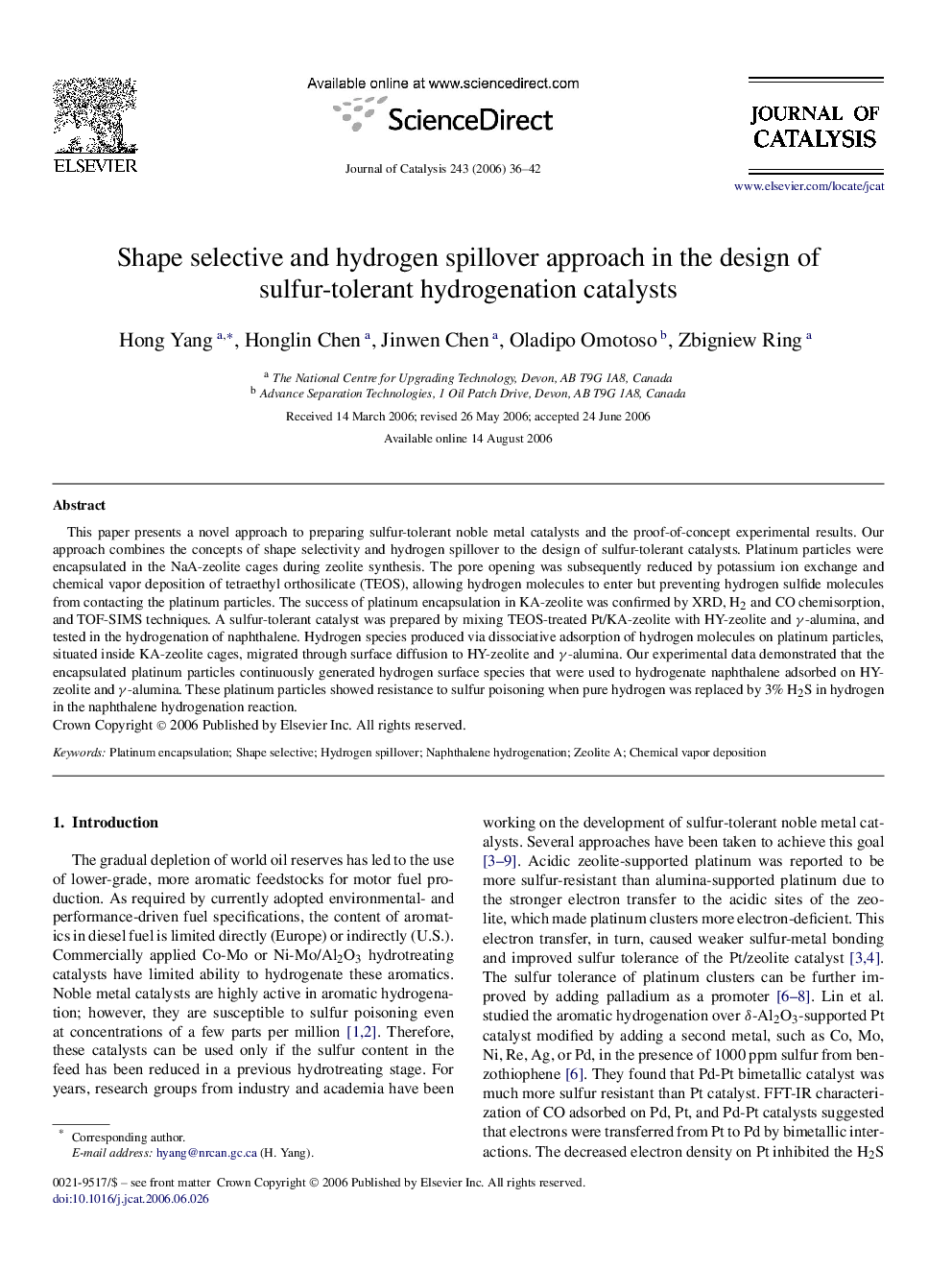| Article ID | Journal | Published Year | Pages | File Type |
|---|---|---|---|---|
| 63436 | Journal of Catalysis | 2006 | 7 Pages |
This paper presents a novel approach to preparing sulfur-tolerant noble metal catalysts and the proof-of-concept experimental results. Our approach combines the concepts of shape selectivity and hydrogen spillover to the design of sulfur-tolerant catalysts. Platinum particles were encapsulated in the NaA-zeolite cages during zeolite synthesis. The pore opening was subsequently reduced by potassium ion exchange and chemical vapor deposition of tetraethyl orthosilicate (TEOS), allowing hydrogen molecules to enter but preventing hydrogen sulfide molecules from contacting the platinum particles. The success of platinum encapsulation in KA-zeolite was confirmed by XRD, H2 and CO chemisorption, and TOF-SIMS techniques. A sulfur-tolerant catalyst was prepared by mixing TEOS-treated Pt/KA-zeolite with HY-zeolite and γ-alumina, and tested in the hydrogenation of naphthalene. Hydrogen species produced via dissociative adsorption of hydrogen molecules on platinum particles, situated inside KA-zeolite cages, migrated through surface diffusion to HY-zeolite and γ-alumina. Our experimental data demonstrated that the encapsulated platinum particles continuously generated hydrogen surface species that were used to hydrogenate naphthalene adsorbed on HY-zeolite and γ-alumina. These platinum particles showed resistance to sulfur poisoning when pure hydrogen was replaced by 3% H2S in hydrogen in the naphthalene hydrogenation reaction.
